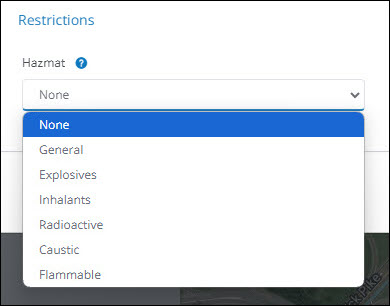Hazmat settings
If you are hauling hazardous materials, you can select a Hazmat category in Route Options for an individual route or in a Vehicle Routing Profile. Depending on the Hazmat value you select, the routing algorithm generates a legal and safe route by avoiding or favoring certain types of roads.

How to select a hazmat category
The table below shows how the Hazmat wording in PC*MILER corresponds to the U.S. Department of Transportation’s Hazmat classifications.
U.S. DOT Hazmat Classes (corresponding PC*MILER hazmat options are bolded)
-
Class 1: Explosives - Explosives
-
Class 2: Compressed Gases
-
2.1: Flammable Gas - Flammable
-
2.2: Non-Flammable Compressed Gas - General
-
2.3: Poisonous Gas - Inhalants
-
-
Class 3: Flammable and Combustible Liquid - Flammable
-
Class 4: Flammable Solids
-
4.1: Flammable Solid - Flammable
-
4.2: Spontaneously Combustible Material - Flammable
-
4.3: Dangerous When Wet Material - Flammable
-
-
Class 5: Oxidizers - General
-
Class 6: Poisons
-
6.1: (part) Inhalation Hazard - Inhalants
-
6.1: (balance) - General
-
6.2: Infectious Substance (Etiologic agent) [“Biohazard”] - General
-
-
Class 7: Radioactive Materials - Radioactive
-
Class 8: Corrosive Liquids - Caustic
-
Class 9: Miscellaneous - General
Hazmat regulations for a particular tunnel on a route should be checked if there is any doubt about which materials are permitted. Regulations may change over time and might not be included in the version of the PC*MILER database that you are currently using.
The shipper of hazardous materials is legally responsible for determining the U.S. DOT Hazmat Class for their shipment and communicating that class to the carrier in their shipping papers.